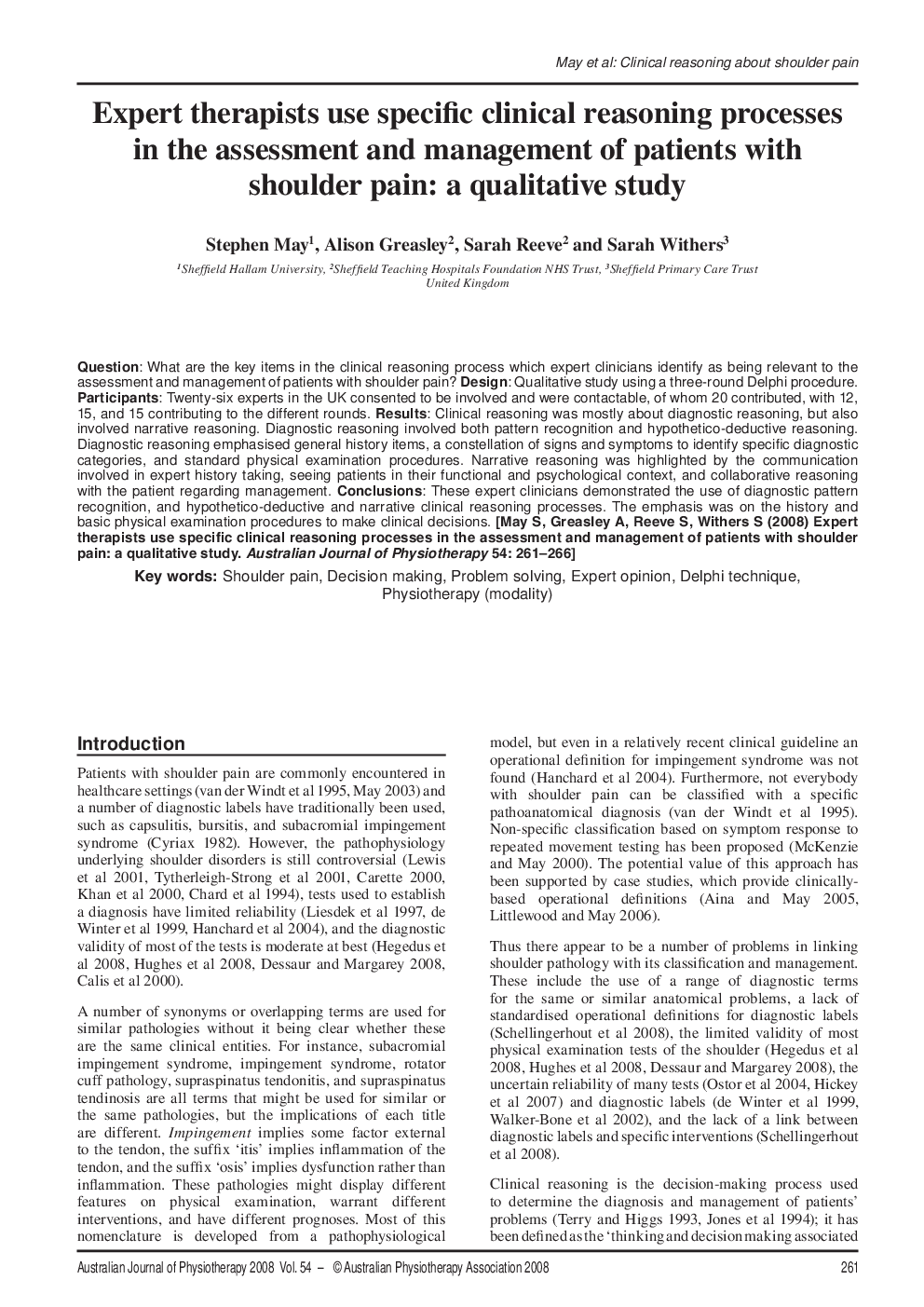| Article ID | Journal | Published Year | Pages | File Type |
|---|---|---|---|---|
| 2704638 | Australian Journal of Physiotherapy | 2008 | 6 Pages |
QuestionWhat are the key items in the clinical reasoning process which expert clinicians identify as being relevant to the assessment and management of patients with shoulder pain?DesignQualitative study using a three-round Delphi procedure.ParticipantsTwenty-six experts in the UK consented to be involved and were contactable, of whom 20 contributed, with 12, 15, and 15 contributing to the different rounds.ResultsClinical reasoning was mostly about diagnostic reasoning, but also involved narrative reasoning. Diagnostic reasoning involved both pattern recognition and hypothetico-deductive reasoning. Diagnostic reasoning emphasised general history items, a constellation of signs and symptoms to identify specific diagnostic categories, and standard physical examination procedures. Narrative reasoning was highlighted by the communication involved in expert history taking, seeing patients in their functional and psychological context, and collaborative reasoning with the patient regarding management.ConclusionsThese expert clinicians demonstrated the use of diagnostic pattern recognition, and hypothetico-deductive and narrative clinical reasoning processes. The emphasis was on the history and basic physical examination procedures to make clinical decisions.eAddenda: Appendix 1 and Tables 2–5 available at AJP.physiotherapy.asn.au
